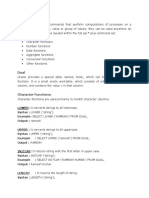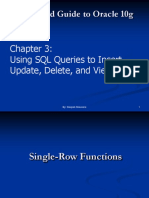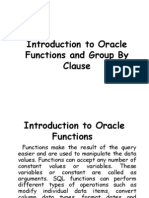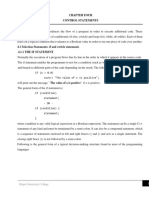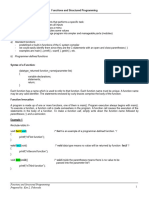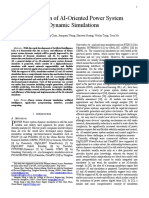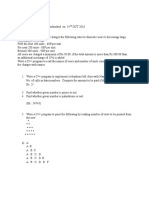0% found this document useful (0 votes)
9 views7 pagesDbms Lab 3
The document outlines SQL formatting rules, including default justification for data types and the use of wildcard searches with the LIKE keyword. It explains handling NULL values in arithmetic expressions, the use of DISTINCT to eliminate duplicates, and various SQL functions such as single-row and multiple-row functions. Additionally, it covers date formatting, conversion functions, and the NVL function to manage NULL values in calculations.
Uploaded by
Prerana lahaCopyright
© © All Rights Reserved
We take content rights seriously. If you suspect this is your content, claim it here.
Available Formats
Download as PDF, TXT or read online on Scribd
0% found this document useful (0 votes)
9 views7 pagesDbms Lab 3
The document outlines SQL formatting rules, including default justification for data types and the use of wildcard searches with the LIKE keyword. It explains handling NULL values in arithmetic expressions, the use of DISTINCT to eliminate duplicates, and various SQL functions such as single-row and multiple-row functions. Additionally, it covers date formatting, conversion functions, and the NVL function to manage NULL values in calculations.
Uploaded by
Prerana lahaCopyright
© © All Rights Reserved
We take content rights seriously. If you suspect this is your content, claim it here.
Available Formats
Download as PDF, TXT or read online on Scribd
/ 7

